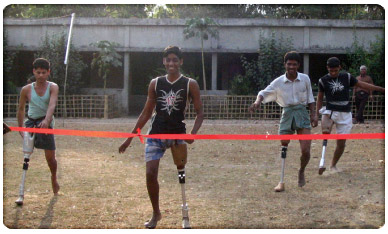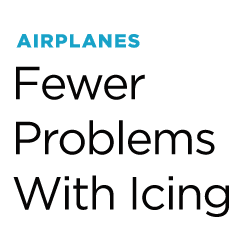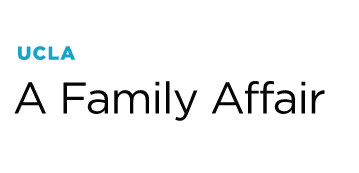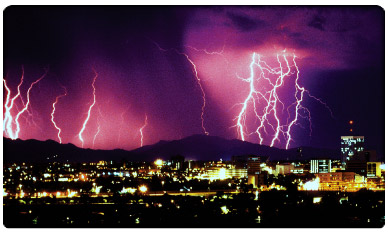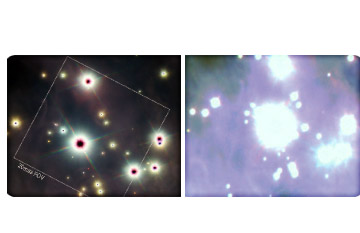In The Family + Starry Night + Lightning Lessons
Want to walk over the Grand Canyon? That should now be possible, thanks to an amazingly engineered tourist attraction scheduled to open in late March, after several delays: the Skywalk. Stretching 70 feet out from the side of the canyon’s west rim, some 4,000 feet above the Colorado River, the Skywalk is a 130-foot-long, cantilever-designed, U-shaped bridge—with a 2.5-inch-thick glass floor that promises to offer a unique view of the canyon. The $30 million project was undertaken by the Hualapai tribe, in partnership with David Jin, a Las Vegas businessman. The tribe is counting on the Skywalk to attract thousands more visitors. Located on reservation land, Grand Canyon West now attracts 345,000 visitors a year, far fewer than the 4 million who visit the national park, some 90 miles away. The two parallel, curved steel beams that comprise the walkway are secured by steel rods set nearly 50 feet into the cliff wall. Lochsa, the Nevada engineering firm that worked on the project, says it’s built to withstand an 8.0 magnitude earthquake 50 miles away and winds in excess of 100 mph. Steel dampers, weighing 1.6 tons each, will keep the structure from vibrating, so visitors won’t feel uncomfortable. At $25 per stroll, that wouldn’t do.–Thomas K. Grose
A pay-to-drive system could help ease rush-hour traffic jams, says a professor of civil engineering. Kara Kockelman, of the University of Texas at Austin, says “credit-based congestion pricing” could improve traffic speeds in bottleneck areas during morning (7:30-9:30) and evening (4:30-6:30) commutes. Her proposed system relies on using either radio frequency identification (RFID) or the Global Positioning System’s satellite technology to keep track of individual cars. Each driver would start the month with a certain amount of virtual credit: When and where they drove would determine how much of (and how quickly) the credit would be spent. Once their credit is used up, drivers have to pay actual tolls. The idea is to give drivers financial incentives to avoid driving during heavy traffic periods. Her computer models indicate that peak-time traffic speeds could be increased up to 25 mph. Certainly beats crawling along at a snail’s pace. —TG
Eager Patients in Bangladesh Race to Learn how to Use their New Legs.
LeTourneau University, a small evangelical school in Longview, Texas, doesn’t often find itself in the national spotlight. But late last year, it was pleased to see its LEGS Project become the subject of a lengthy feature in the Chronicle of Higher Education, which has a readership of 400,000. LEGS is short for LeTourneau University Engineering Global Solutions, a senior design project that has 11 undergraduates designing and building low-cost artificial legs for amputees in Africa and Bangladesh. While prosthetic legs can cost $20,000 each in the United States, the LEGS devices are made for around $40. “We’re taking devices that work in the United States and reverse engineering them to eliminate what makes them expensive, so they will be affordable and sustainable,” Roger V. Gonzalez, the professor of biomedical and mechanical engineering who started the project, told the Chronicle. The prosthetics have to be durable, as well as inexpensive, able to withstand treks on tough terrains. Teams of the students also travel to Kenya, Sierra Leone and Bangladesh to not only fit the legs on amputees but to show locals how to build similar devices using easily available materials. Each student pays $3,500 to cover travel costs. And it’s a tough trip, not for the faint-hearted, Gonzalez says. Nevertheless, the 11 team member slots were oversubscribed four times over.—TG
In a world where technology is becoming increasingly important, students in America’s inner-city schools are failing to learn the basics of science. That’s the dismal result of the National Assessment of Educational Progress’s first in-depth look at science learning at the district level in 10 urban areas. At the 8th-grade level, when students should be learning advanced concepts, the majority of students in nine of the 10 cities assessed didn’t understand science at the most basic levels. Only in Austin was a slim majority of students—52 percent—rated as having basic or better science skills. Twenty-five percent were rated as having basic skills, 23 percent had proficient skills and four percent fell in the advanced category. The worst performing city was Atlanta, where 70 percent of 8th graders don’t understand basic science. On a national level, things are pretty grim, too: 43 percent are below basic; 30 percent understand basic concepts, while 24 percent and 3 percent are considered proficient or advanced at science, respectively. There’s a very slim reed of hope for the future. At the 4th-grade level, three of the 10 cities had fewer than half their students rated as below basic: Austin and Charlotte (both 40 percent) and San Diego (49 percent). Los Angeles’ 4th graders ranked last: 65 percent were assessed as below basic. Nationally, 34 percent of 4th graders haven’t grasped the rudiments of science.— TG
A major risk to airplanes is in-flight icing. When ice pellets or water droplets coat aircraft wings with a layer of ice, it creates drag that can pull the plane dangerously toward Earth. Icing is thought to have contributed to the deaths of more than 800 people between 1982 and 2000, and it costs the airline industry millions of dollars. Even experienced pilots will detour hundreds of miles to avoid possible icing conditions. But a new version of the system CIP, for Current Icing Product, now allows pilots and air-traffic controllers to not only rate, on an hourly basis, the probability of where icing may occur but how severe it will be. The original CIP system—developed at the National Center for Atmospheric Research—only predicted likely icing trouble spots. The new version also allows pilots to see the maps in the cockpit. Planes designed for icing conditions can now fly through light icing areas instead of making wide detours. That should save airlines more than $20 million a year in delays, damage and fuel. — TG
Now, here’s a real engineering feat: Four siblings of one California family have not only each received an undergraduate degree in engineering, but all four were awarded by the University of California, Los Angeles. Henry Martinez received his degree in electrical engineering in 1977. Next, in 1983, brother Rene got his in chemical engineering. Their sister Rosanna graduated a year later, and finally the youngest sibling, Melissa, earned hers in civil engineering in 1992. Henry is chief technology officer at Vision Solutions, a software company; Rene is assistant program manager at Northrop Grumman; Rosanna is a photolithography specialist at HRL Laboratories; and Melissa (now de la Pena) is a project engineer and group leader at CH2MHILL. — TG
One of the stumbling blocks to the promise of a clean hydrogen energy future is the old chicken-and-egg quandary. Which comes first, hydrogen-powered vehicles or the distribution infrastructure needed to let their drivers “fill ’er up” with ease? Carmakers won’t make and buyers won’t buy cars that aren’t easy to fuel. But fuel companies don’t want to spend billions building a hydrogen distribution network if there aren’t enough drivers demanding the stuff. A new program at Pennsylvania State University’s Hybrid and Hydrogen Vehicle Research Center is looking to help solve the problem. It’s built the state’s first commercial hydrogen fueling station. Initially, it’ll be used by a small fleet: one local bus and a university maintenance van, each burning a hydrogen/natural gas blend; and a General Motors demo car run by a fuel cell that operates on pure hydrogen. Also, Penn State researchers, including engineers studying hydrogen issues, will be able to tap into the fueling station’s supply of hydrogen, which is being produced by steam reforming as natural gas. Initial demand is expected to be 40 kg of hydrogen a day, but as the hydrogen fleet grows, that is expected to increase to 100 kg. Wonder if they’ll bring back coupons? — TG
AUSTRALIA—An Australian engineer has spent most of his career researching the flight of the honeybee, and now his work has earned him the country’s top science prize, worth $250,000. Will it help us to know how bees fly? “Oh, certainly,” insists 58-year-old Mandyam Srinivasan, who was born in India and earned an electrical engineering Ph.D. from Yale. “When my research started, it had no obvious application. But it’s since been recognized as having important defense and space exploration implications.” Srinivasan is professor of visual sciences at the Australian National University’s School of Biological Sciences and director of its Center for Visual Sciences. An engineer and biologist, he receives research grants from NASA and the U.S. Defense Department. When Srinivasan won the Prime Minister’s Prize for Science, Prime Minister John Howard observed that “what started 23 years ago, as basic research with no apparent application, is now followed closely by robotics experts around the world.” The key breakthrough: mapping how bees’ visual navigational skills can be duplicated in low-cost, lightweight technology for unmanned aircraft on Earth or in space—Chris Pritchard
Above: electrical storm in Arizona. Below: Greg Leyh inside electrode in test of Tesla coils.
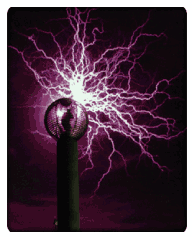
An image of the Orion Nebula with (left) and without the new adaptive optics system of the Subaru?s IRCS camera and telescope.
TOKYO—The National Astronomic Observatory of Japan has spent five years puzzling over a cure for “twinkle, twinkle, little star”—and has now declared victory. Turns out that the flash from constellations is a bane to astronomers, hence by canceling out the twinkle with the aid of a combination advanced adaptive optics and laser guide star system, Japan’s 8.2-meter optical infrared Subaru telescope on the summit of Mauna Kea in Hawaii now provides sharper images of once-inaccessible or difficult-to-glimpse regions of the universe.
A laser beam is projected to simulate a bright guide star near the target object and measure the twinkle—which is actually light blurred by turbulence in the Earth’s atmosphere. Real guide stars afford access to only about 1 percent of the celestial sphere, the agency says, but the new system should provide detailed images of faint distant galaxies, quasars and gamma ray bursters. The new system at Subaru has already yielded an image of the Orion Nebula with a resolution 10 times higher than in the past. Contrast and detail with the new system is 3.5 times as detailed as with the orbiting Hubble space telescope. That resolution is powerful enough to detect a ping pong ball at a distance of 60 miles. Similar adaptive optics systems are being fitted on other large optical telescopes worldwide.—Lucille Craft
The United States isn’t alone in worrying where the next generation of scientific researchers and technical workers will come from. Alarms are being raised in the United Kingdom, as well. Enrollments in degree programs associated with technology have fallen 20 percent since 2000 and the dotcom bust. Last year, the United Kingdom graduated a mere 35,000 undergraduates in science, technology, engineering and mathematics, continuing that slide. Compare that to China and India, each of which is churning out more than 750,000 STEM grads a year. In 1985, nine of the 10 biggest IT services companies in Britain were homegrown. Not anymore. In 2005, only two—British Telecommunications and Capita—are in the top 10. Gordon Brown, Britain’s chancellor of the exchequer (finance minister) and the likely successor to Tony Blair as prime minister later this year, is making more money available to increase technology training. But Richard Holway, a director of the software consulting firm Ovum, fears it may be too late. He predicts that 40 percent of Britain’s information technology jobs will be offshored by 2010 and 60 percent by 2020—and those are conservative estimates, he adds. Says Holway: “From Bill Gates to the people who led Google, up to the YouTube inventors, they did not go to university to read media studies or classics.”—TG
Richard Newton, dean of the College of Engineering and the Roy W. Carlson Professor of Engineering at the University of California, Berkeley, and one of the pioneers in the field of electronic circuits and systems, died on Jan. 2, 2007 of pancreatic cancer.
“Most people have their strengths and weaknesses, but Richard could literally do it all,” Berkeley colleague and friend Kurt Keutzer said. “I can’t think of a single more talented individual. He had a brilliant technical career, a distinguished career as an entrepreneur, and then an equally distinguished career as a university administrator.” He became very concerned with the application of technology for the betterment of humanity so he helped start the Center for Information Technology Research in the Interest of Society (CITRIS), as well as an interdisciplinary project called Information and Communication Technology for Billions— “sort of a techno Peace Corps.” A distraught Keutzer added, “The truly extraordinary thing was that, given all his talents, he wasn’t focused on Richard Newton Incorporated. If he had concentrated on making money he could have done a lot better financially, but he actually wandered around saying ‘How can we make the world a better place?’”
That interest was reflected in a commencement address in June 2002 at Del Mar Middle School in Tiburon, Calif. “The world I grew up in,” he told his young audience, “the world your parents grew up in, was defined by what we called the Cold War—a world that was defined by boundaries and separation. Your world, on the other hand, is defined by connections—Who are you connected to and who can you collaborate with? Who are your friends? How can you help one another?”
A native of Australia, Newton earned a B.Eng. and M.Eng.Sci from the University of Melbourne, where he played Australian rules football semi-professionally, before completing a Ph.D. at Berkeley in 1978. He joined the faculty the following year, after taking off six months to travel around the world. He served as vice chairman and chair of the EECS department before becoming Berkeley’s dean of engineering in 2000.
In his career, Newton won a host of awards. He was the national recipient of the C. Holmes McDonald Outstanding Young Professor Award of the Eta-Kappa-Nu Engineering Honor Society in 1987, the IEEE Golden Jubilee Award in 2000 and, in 2003, the EDAC Phil Kaufman Award—the highest recognition of the Electronic Design Automation Consortium. In 2004, he was elected to the National Academy of Engineering. He also served on the board of advisors and directors for numerous design technology companies and participated in the development of dozens of new companies, including SDA Systems (now Cadence Design Systems), Synopsys, Simplex Solutions and Crossbow.
As a member of the Engineering Deans Council Public Policy Committee, Newton was both an effective member and a visionary voice, according to EDC Chair Paul Peercy. In March 2006 he organized and chaired the opening session of the Engineering Deans Institute—“an absolute masterpiece,” says Daniel Pitt, engineering dean at Santa Clara University. Newton brought together CEOs from some of the biggest players in the Bay Area, such as Sun Microsystems, Adobe and Flextronics.
He also served as a guiding light to Pitt. “When I left industry and came to Santa Clara in 2002, he was a real mentor to me. He made time for me every year for a one-on-one to find out how things are going and give me advice. There aren’t many people like him.” Newton, who was 55, leaves behind his wife, Petra Michel, and two daughters, Neeris, 13, and Amrita, 10. –Pierre Home-Douglas
Category: Briefings





